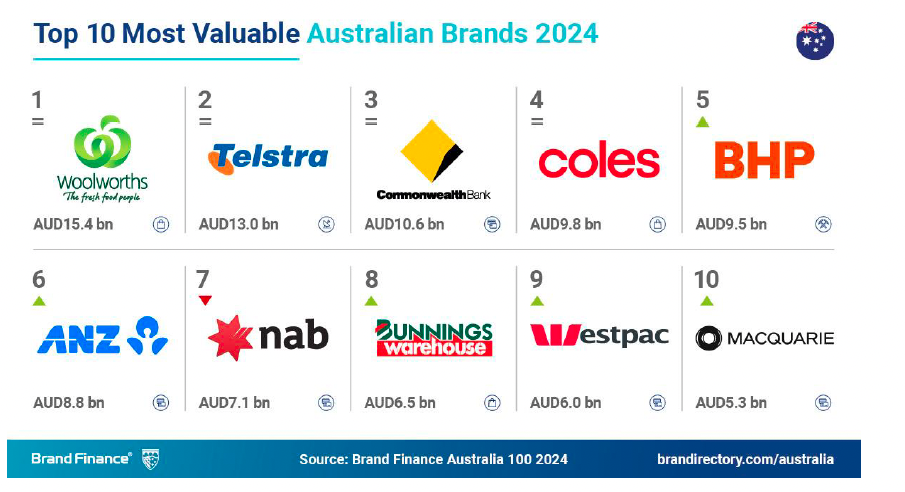Bernard Salt: Don’t expect Australia’s high earning millennials to return to the office; they’ll ‘die before they submit to going back to the way things were’

What you need to know:
- Millennials have become the driving force behind mass migration to Australia’s larger regional towns and cities in a trend that kicked off during the pandemic and is persisting beyond lockdowns.
- During a breakfast industry briefing held by Boomtown last week, social, business and market commentator, Bernard Salt, said the move to lifestyle locations by more than 1 million millennials is being driven by the desire for their “forever home” and more affordable housing, along with more balanced lifestyles.
- He told Mi3 he’s certain it’s a trend that will supersede any effort by employers to get them back into offices, dour economic conditions and tough jobs market or not. Per Salt: “I don’t think that it’s going to increase enough for Australians to say, ‘You know what? I’m going to go back to commuting an hour, if not more, each way, five days a week’. I just don’t see millennials buying into that… They’ll die before they submit to going back to the way things were.”
- Salt also has the data to prove the highest income age for Australians is 43 years old – an age this country’s 6 million millennials will be passing through over the next 10 years, making them an ever-desirable spending cohort for brands.
- With nearly 40 per cent of Australians now living outside of metro capital areas, Boomtown figures show a surprisingly diverse, cashed-up consumer cohort, spending 6.5 per cent more on groceries and engaging in ecommerce in higher numbers than metro counterparts.
- As Salt sees it, the power of the herd will continue to make these regional hubs ever-more culturally fashionable.
- Latest Commbank data backs-up Boomtown’s own figures. Per the bank, 27 per cent more people moved from cities to regions than in the opposite direction in the June quarter.
Cultural fashionability follows the hard numbers, according to Bernard Salt. And with millennials leading migration into regional Australian towns near metro areas such as Geelong, Warragul, Kiama or Newcastle, their pursuit of a better lifestyle and forever home is opening up a golden opportunity for brands to get on trend, he says.
“You can really tell when a region, trend or a movement becomes ascendant, when it becomes fashionable, and you can see it on television,” Salt tells Mi3. “I saw this with Sea Change in the late 1990s. Everyone fell in love with that, everyone wanted to do it. Then came the hipster movement, that inner city lifestyle where we’re all going to become very European-esque and cosmopolitan.
“Now I say it’s the movement by millennials to the forever home and lifestyle regions. When there’s a soap opera that talks or encapsulates this and reaches the fashionable pages of our media now, like baristas in Bowral or Warragul, then you really know the movement is hot. It’s that cultural fashionability that follows the numbers.
“Millennials will carve out their own way, and they will make it fashionable, whatever they choose to do. That is the sovereign right and effect of demographic muscle. When you’re the biggest group, whatever you do becomes fashionable.”
The millennial migrant
Salt caught up with Mi3 after keynoting last week’s Boomtown breakfast in Sydney, where he predicted the next 10 years to be the time of the regions. The reason? A surge in population and mass migration of a generation of 30 and 40-somethings at the peak of their earning power and with kids in tow, who are unwilling to accept the old way of working and desire a better balance of lifestyle, household make-up and ready spending money.
Today, 9.8 million people, or nearly 40 per cent of Australia’s population, live in the country’s regional areas. Higher than average migration through Covid has persisted post-pandemic, led by millennials of an average age of 33.
Latest data from Commbank suggests that trend continues – 27 per cent more people moved from cities to regions than in the opposite direction in the June quarter per the bank.
It’s not going to stop, insists Salt, who uses census data showing the peak income age of 43 as another reason for why this migration is so critical for marketers to be paying attention to.
“You have the millennial generation passing through and beyond the 43-year-old stage in the lifecycle over the next 10 years. The millennials were in the city, eating smashed avocado, living that inner city lifestyle. That’s great if you’re late 20s, early 30s. What happens when that entire generation in their late 30s with rising income, want their forever home? Where are you going to buy your forever home in this market?” Salt asked.
Proving his point Australians are obsessed with home and lifestyle over most other things, Salt noted the meteoric rise of retailers such as Bunnings and Harvey Norman. He also highlighted Census data showing regional housework is higher on average than metro. And there was plenty in his presentation on the make-up of the modern home, from plump pillows to German kitchen gooseneck tapware that have become “the new silverware”, Salt said.
“After 30 years of uplift in GDP per capita, here is where we spend our wealth and prosperity. It’s not a 1,000 square metre block. It’s only 550 square metres, but it’s four bedrooms, two bathrooms, not one. It’s two kids, not four. And it’s two income earners, not one,” he said.
“I don’t care whether you are in Hornsby or in the suburbs of Dubbo, Cairns, Bunbury or Geelong, you will find this house. You’ll also find enablers of this house in every one of those locations like Bunnings and Harvey Norman. All of those businesses have been catapulted forward on the basis of rising prosperity. In the next iteration of the home, focus and obsession is being able to choose where you live, and choosing how you deliver your workplace value.”
Other Boomtown figures back up the appeal of regional Australians as consumers. For example, two-thirds of regional Australians work white-collar jobs (compared to just 2.4 per cent working in farming), with average disposable income that nearly matches metro. In addition, regional consumers spend 6.5 per cent more than metro counterparts on groceries. Recent Australia Post data shows faster ecommerce growth is happening in Australia’s regional areas over metro too.
“It’s the movement to the near regions, just beyond the edge of the metropolitan area and to the major regional centres. That is 10 million people with the spending power of the average Australian. That’s a market worth pursuing,” said Salt.
When an unemployment rate gets to 12 per cent, crazy stuff happens – it’s the point people lose all sort of sense of reality. I think we're a long way from that. I don't think that it's going to increase enough for Australians to say, oh, you know what? I'm going to go back to commuting an hour, if not more, each way, five days a week. I just don't see millennials buying into that. They won't submit. They'll die before they submit to going back to the way things were.
No turning back
There’s no doubt the single biggest shift enabling this trend is working from home. Using census data for the last 30 years, Salt noted the average ratio of Australians working from home historically sat at about five per cent, with rarely a percentage point change in such social indicators.
Until Covid: During the pandemic and the 2021 census, figures jumped to 21 per cent.
“It’s not just going to go back to five per cent. Imagine telling a millennial the great news the pandemic is over, you can go back to commuting an hour each way from Penrith into the Sydney centre and back out again, five days a week for the next 30 years of your career. That millennial will say, no way am I doing that,” Salt said. “There’s a better way to deliver workplace value, and that enables me to have my forever home, to live my quality of life and have more spending power.”
As a consequence, Salt predicted the 2026 census would see the ratio of working from home professionals shift and settle at 15 per cent. Chris Minns and his NSW Government return to the office policy be dammed, apparently. Salt also dismisses the idea posited by recruiters speaking to Mi3 recently that the tough market, quiet redundancies, job cuts and inflation have tipped the scales enough towards buyers in the employment market that they’ll force the issue.
“Ten per cent of the workforce, or 1.4-1.5 million workers, are now making a choice about where and how they want to live,” Salt said, indicating the significance of the millennial cohort. “Do they want to live in Penrith, in Cranbourne, in Caboolture, and commute into the city centre and back out again? Or do you think they are saying, I want a better way? That is the logic that will drive this.”
Salt insists this shift will be maintained even if unemployment figures inch up in Australia. In July, the nation’s unemployment rate was 4.2 per cent, up 0.1 per cent from June and 0.7 per cent from the 3.5 per cent recorded two years ago.
“In the last non-Covid induced recession of 1991-1992, unemployment peaked at just over 12 per cent. It’s a threefold increase to get to where a traditional old fashioned jobs breaking point. It’s got to go up three times. I don’t think it will. If the economy slows, it might get to up to 5, 6 per cent. It will not get back to 12 per cent, even in a recession,” Salt predicts.
The reason is Australia’s diminishing fertility rate since 1970. “The feeding pool of young people into the workforce is slowing to a trickle. It’s simply a need to have these workers,” continues Salt.
“The power balance has permanently shifted from employers as a consequence of shallower labour pools happening globally. I don’t think they’re going to get back to where they were in 1991-1992.
“When an unemployment rate gets to 12 per cent, crazy stuff happens – it’s the point people lose all sort of sense of reality. I think we’re a long way from that. I don’t think that it’s going to increase enough for Australians to say, ‘oh, you know what? I’m going to go back to commuting an hour, if not more, each way, five days a week’. I just don’t see millennials buying into that. They won’t submit. They’ll die before they submit to going back to the way things were.”
Culturally on trend
Salt has been arguing the point about millennials moving to the regions for years. That’s “the fashionable regions, not the flat lands of the wheat belt or something like that”, he says.
“We have six million millennials now. They’ve had kids, and having committed to that inner city lifestyle, they’re now thinking, I can’t do this. Especially working from home, I need space. And they will make areas cool that were previously regarded as remote or provincial,” he says.
Up until 10 years ago, the only suburb in regional Australia that really had street cred was Byron Bay.
“Now, we’re seeing new suburbs and places like Daylesford, Castlemain, Geelong, Ballarat, Bendigo, Kiama, plus up the coast and down the coast. This is the impact of the herd,” says Salt. “Once the herd shifts, you can’t wave a flag and say, Oh no, that’s daggy, because the herd will just swamp you. And there’s a necessity to what they want: Space, affordability, quality of life.
I don't care whether you are in Hornsby or in the suburbs of Dubbo, Cairns, Bunbury or Geelong, you will find this house. You'll also find enablers of this house in every one of those locations like Bunnings and Harvey Norman. All of those businesses have been catapulted forward on the basis of rising prosperity. In the next iteration of the home, focus and obsession is being able to choose where you live, and choosing how you deliver your workplace value.
Macro myopia
Ever the macro analyst, Salt also isn’t overly fixated on the cost-of-living crises and curbs in spending. During his presentation, he noted Australia was the 10th most wealthy country on the planet, rising 10 places in the last 30 years. With Mi3, he also took a swing at the myopic focus held by many economists.
“It always strikes me that economists have ruled the day. They’ve set the agenda. The agenda is the next three months, six months, 12 months to the next election, and nothing exists beyond that. Whereas I think the near-term is boring; look at the horizon and see where we’re going. And I’m still confident,” Salt says.
“If you’re not going to come to Australia, where else are you going to go? Where is better? What offers better quality of life? I get it about the cost of living; it is difficult and tough at the moment. But we will weather this storm, get through and on the other side of that, our fundamental qualities will emerge. We have space, we have security, we have lifestyle. We have a standard of living that places Australia as the 10th richest nation on the planet.”
Of course even as Salt talks up millennials, it can be dangerous to paint Australia’s larger regional cities and towns with the same brush. For instance, there are communities dominated by retirees, such as Victor Harbour in South Australia, Hervey Bay in Queensland or Forster on the NSW mid north coast. Then there are other, vastly different, like mining communities, with even higher disposable income and workers. Salt points out the richest community on the Australian continent according to the census is a remote community inland from Karratha you can’t even find on a map.
“People in Point Piper earn more money, but there’s a lot of people who don’t earn an income living in Point Piper – kids, partners, older people. The richest, pure, high-income earner population is a mining camp. So you can get these quite bizarre communities,” comments Salt.
“And there are jobs, for example, you just don’t get in quantum in regions that you get in the capital cities. That is substantially the public sector: The administration of the state right is done effectively from capital cities. You get bits and pieces and local councils, but it’s mainly a very free enterprise community.”
In fact, there are more owned businesses in regional Australian locations than metro. Salt highlights the 7 per cent of Warragul’s 50,000 residents who are tradies as one point; the census more broadly highlights this fact. Which is why Salt expected towns within that two-hour zone of a metro capital, to continue to evolve and blossom.
“If you were to go to Warragul at 7 o’clock in the morning, you would find a convoy of Ford Ranger utes going back into town to work on building and construction projects. And they’d be paying half the property price in a place like that,” Salt said. “This is the logic of the lifestyle zone.”





